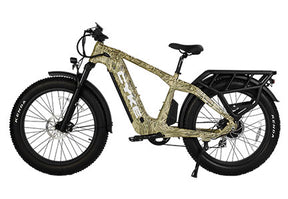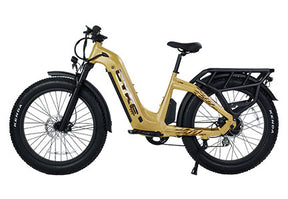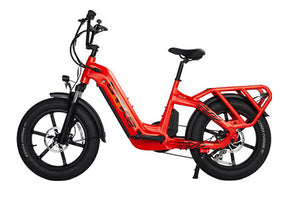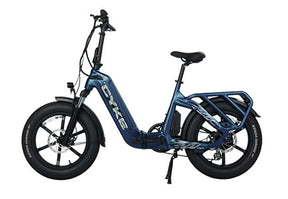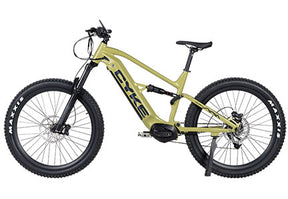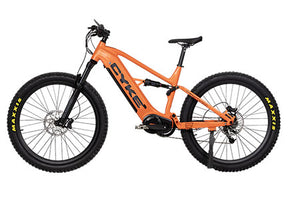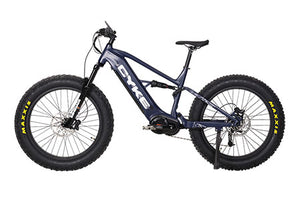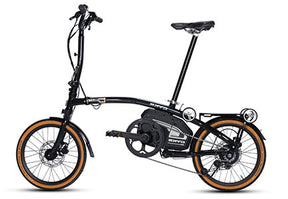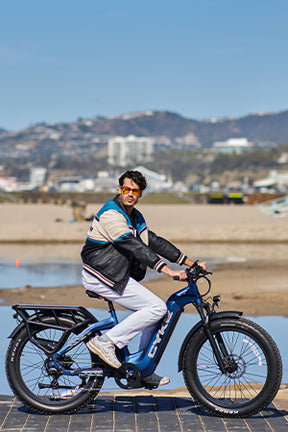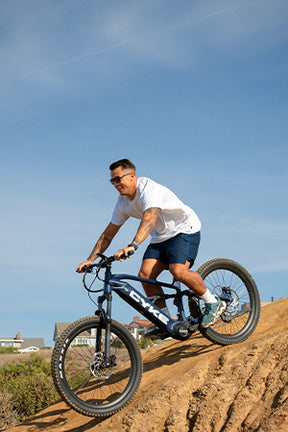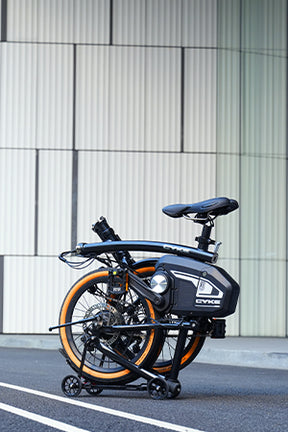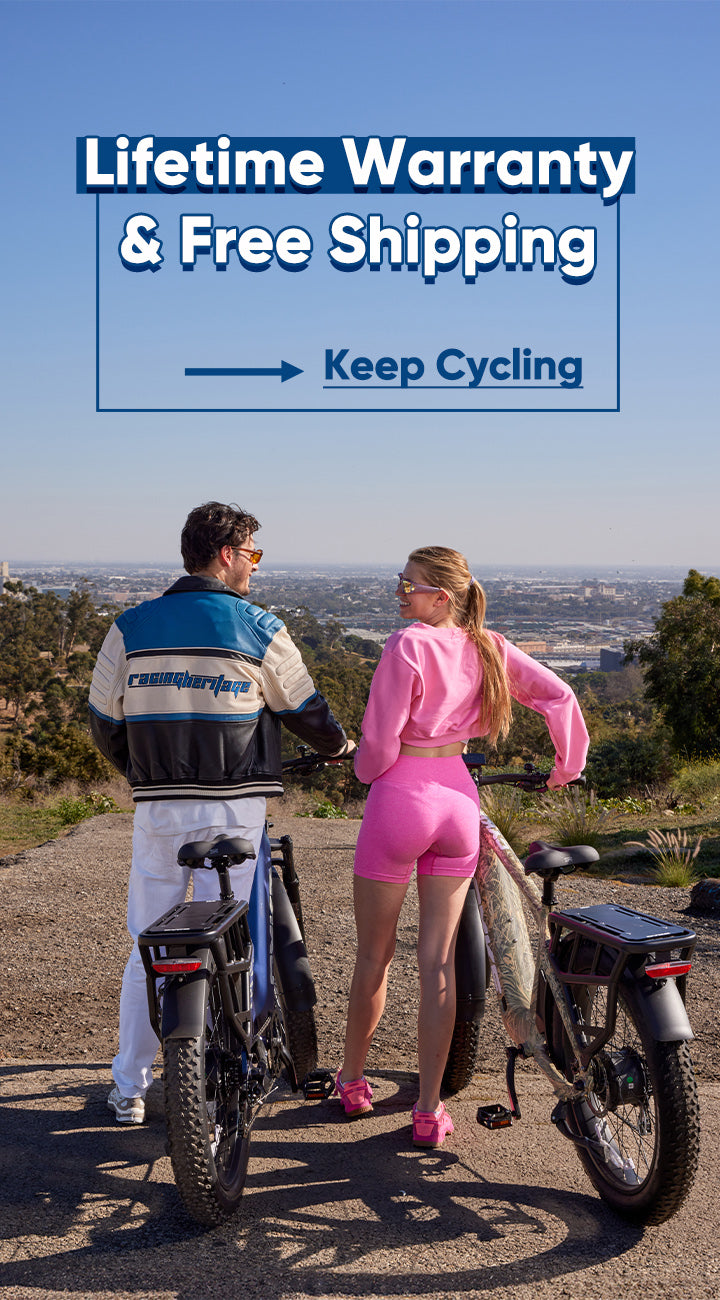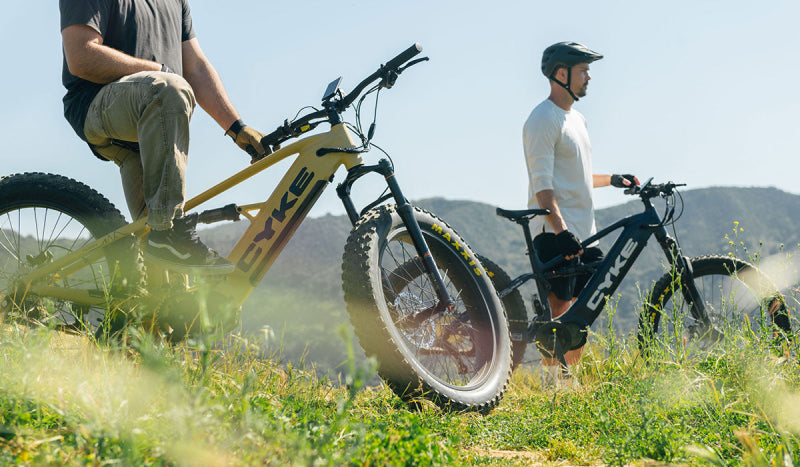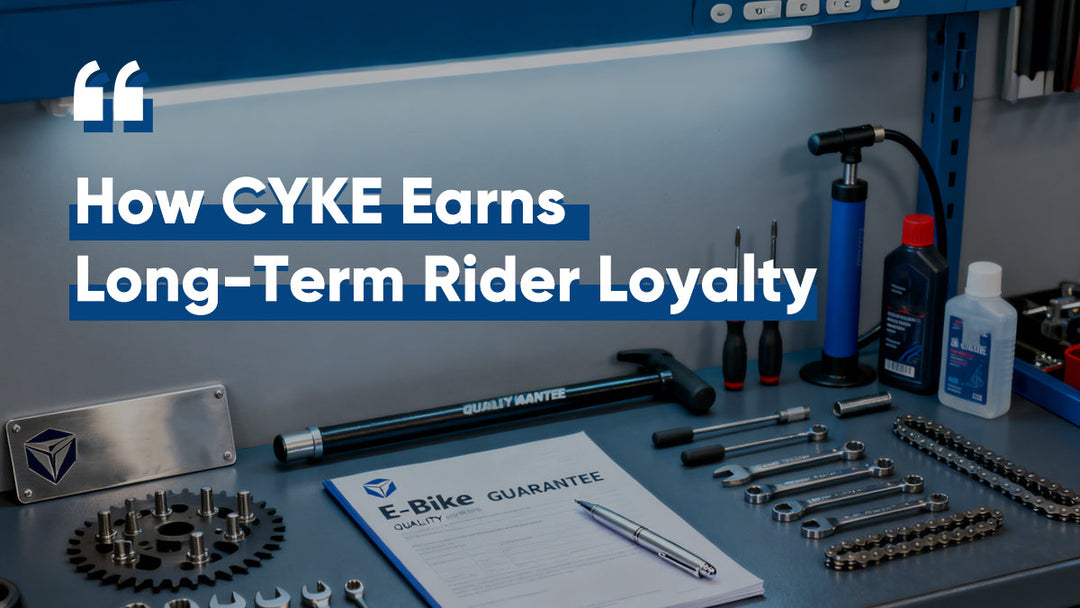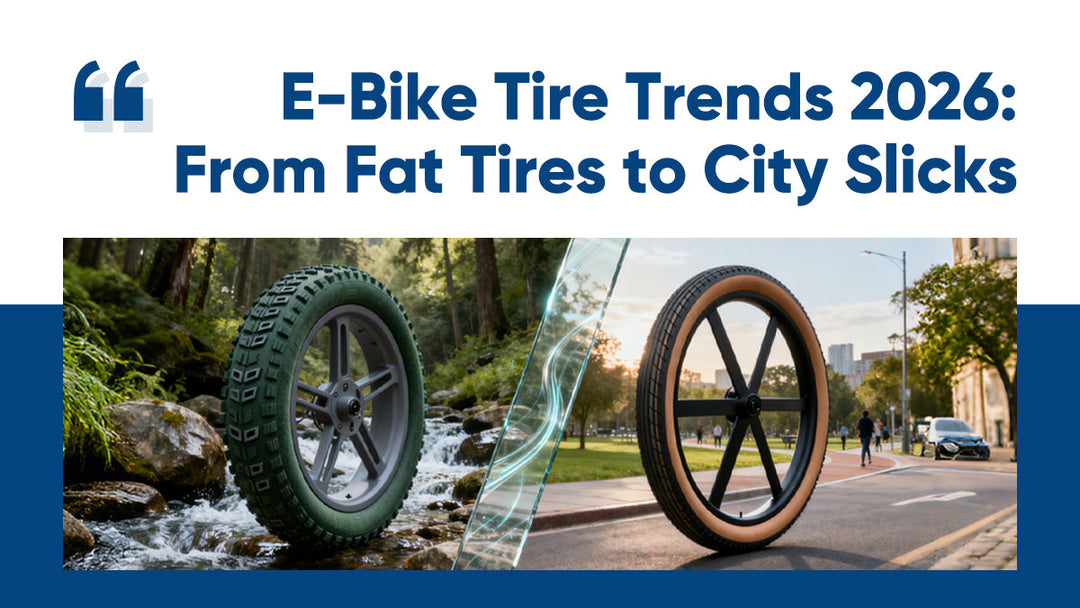Featured in this posts
eBike Downhill Thrills: Key Specs to Look For
Downhill biking is all about adrenaline; the rush of speed, the challenge of technical terrain, and the joy of conquering steep descents.
But when you add electric power to the mix, the experience transforms. Electric bikes offer the perfect blend of power and agility, allowing riders to tackle challenging downhill trails like never before.
However, not all eBikes are built for downhill chaos. To truly thrive on steep, rocky descents, your eBike needs specific features. Let’s break down the key specs that turn an ordinary e-bike into a downhill-ready vehicle.
Key Specs That Make eBikes Perfect for Downhill Thrills
Regarding ebike downhill riding, two components matter the most: the motor and the suspension.
Powerful Motor for Speed and Control
A strong motor delivers extra speed and provides the control required on steep descents. On steep descents, you need enough power to keep momentum, handle rough sections, and push out of corners with confidence. High-torque motors (measured in Newton-meters, or Nm) give you that extra kick when you need it.
In practical terms, a motor that can deliver smooth and responsive power is essential. It should kick in quickly when you need an extra boost, yet be subtle enough to let you enjoy the ride without feeling overwhelmed.
For example, the CYKE’s Cheetah Hunting eBike features a Bafang 750W brushless motor that delivers 85Nm of torque. That means it delivers solid power while keeping the ride natural and controlled. Whether you’re rolling over rocks or zipping down a tricky path, this motor gives you the confidence to tackle tough terrain.
Suspension: The Backbone of Comfort and Stability
Suspension is what keeps your ride from feeling like a rodeo. It absorbs bumps, keeps your tires planted on the ground, and helps you stay in control on rough trails.
Take the CYKE Falcon S Full Suspension downhill emtb, for example. It comes with a 150mm travel RST front fork and a RockShox air spring rear shock. That means you can adjust it based on the terrain, so you get the right mix of comfort and control.
For ebike downhill riding, this full suspension setup is the way to go. It softens big hits, makes technical sections easier, and protects your eBike’s components from harsh impacts.
Braking Systems: The Key to Safe Downhill Riding
Downhill riding demands reliable braking. The right braking system can be the difference between a thrilling ride and an unsafe descent.
Hydraulic Disc Brakes vs. Mechanical Brakes
When it comes to braking, the best downhill e-bike features disc brakes. Hydraulic disc brakes generally offer stronger, smoother, and more consistent stopping power compared to mechanical brakes.
They use fluid pressure to operate, which means the force you apply is transmitted more evenly to the brake pads. This results in shorter stopping distances and better modulation; important factors when riding at high speeds.
While mechanical brakes are easier to maintain and often found on entry-level models, they typically require more effort and can feel less responsive on steep, technical descents.
Brake Rotor Size and Its Impact
Larger rotors can dissipate heat more efficiently, reducing the risk of brake fades during prolonged downhill rides. They also provide greater stopping power, which is essential when you’re navigating steep, fast sections of trail.
Ideally, 180–220mm rotors dissipate heat better and reduce fade during long descents. Also, look for an e-bike that offers a rotor size suited to your weight and the demands of the terrain you ride on. A well-matched rotor ensures that your brakes remain effective even after repeated hard braking.
Tires: Traction and Stability for Steep Descents
Tires are your connection to the trail. They determine how well you grip the surface and control your e-bike on technical descents.
Knobby Tires for Better Grip
For downhill riding, knobby tires are the go-to option. The deep, aggressive tread patterns provide superior traction on loose and uneven surfaces. This enhanced grip gives you the confidence to push your limits on steep descents, as the tires bite into the trail and help you maintain control even on slippery or rocky terrain.
Tire Pressure and Its Role in Control
Lower tire pressure can improve grip and absorb small bumps, making for a smoother ride on rough terrain. However, too little pressure may increase the risk of punctures or cause the tire to feel sluggish.
On the other hand, higher pressure reduces rolling resistance but might compromise traction on loose surfaces. Thus, experiment with different settings until you find the right balance between responsiveness and stability.
Battery Capacity and Range
While downhill thrills are exciting, you also need to consider how far you can ride. Battery capacity and placement are key factors that affect both performance and ride balance.
Adequate Range for Extended Trails
For extended ebike downhill adventures or long trail sessions, you want a battery that can provide ample range without adding excessive weight. Look for a 960Wh or more powered battery that can sustain multiple laps.
For example, the Cheetah Hunting eBike comes with a 960Wh battery, giving you over 100 miles of range. That means you can hit the trails all day without stopping to recharge. More time riding, less time waiting.
Battery Placement for Balance
Where the battery sits on your eBike affects how it handles, especially on fast descents and sharp turns. A battery built into the frame or mounted low and centered keeps the e-bike balanced and stable. If it's placed too high or off to one side, the e-bike can feel unsteady, making it harder to control at high speeds.
Frame Material: Durability and Weight
The frame material directly influences both durability and weight. For downhill riding, you want a frame that is both strong and lightweight.
Aluminum vs. Carbon Fiber
Aluminum frames are popular for their strength and affordability. They are durable and can absorb some of the vibrations from rough trails, making them a solid choice for many riders.
However, aluminum tends to be heavier compared to carbon fiber. Carbon fiber frames, on the other hand, offer superior strength-to-weight ratios. They are lighter and provide a stiffer, more responsive ride, ideal for riders who want to push their limits on technical descents.
Consider your budget and riding style when choosing between these materials. A well-designed frame will support your downhill adventures while keeping the overall weight manageable.
Conclusion
Choosing the best downhill e bike isn’t about picking the flashiest model, it’s about matching specs to your riding style and local trails.
Prioritize torque-heavy motors, robust suspension, and powerful brakes. Pair those with grippy tires, a long-range battery, and a durable frame, and you’ll have an eBike that’s ready to shred.
Remember: the right eBike doesn’t just handle downhill thrills, it amplifies them.
